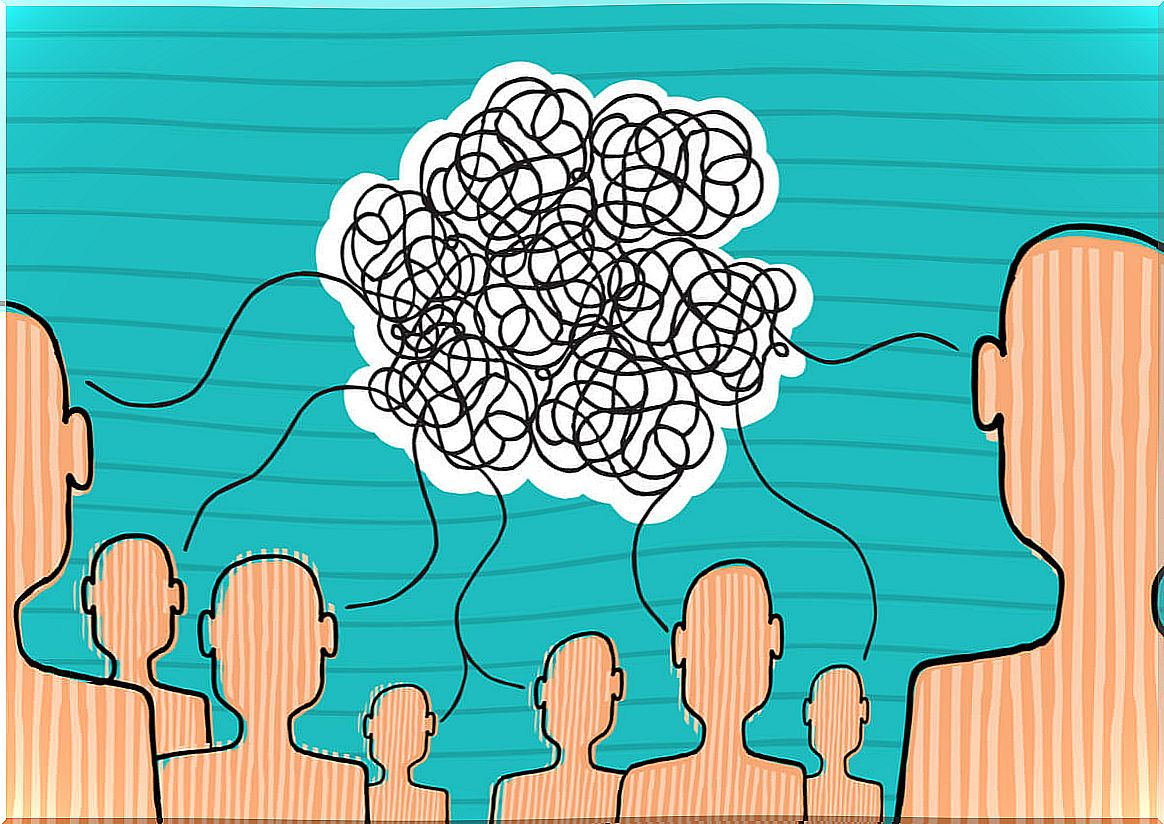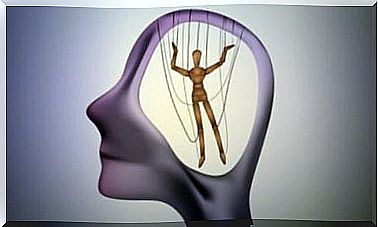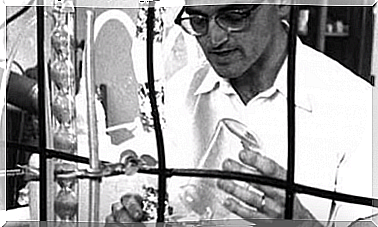The Imperative Language: Much More Common Than We Think

If we analyzed the dialogues, we would discover that not only the indicative language is the most implemented in the day to day, but we would also discover that the imperative forms are more frequent than we think. This set of forms constitutes the imperative language, the one that imposes, the discourse that orders and commands, the dictator language of bosses towards their employees, and the language of parents to children at specific times … In short, the language of asymmetric relationships .
Language itself, without being imperative, already exerts a strong influence on our perception. For this reason, it is not very difficult to imagine its impact when it is positioned in the aforementioned order and command.

Is imperative language common?
Watzlawick points out, almost between the lines, how Spencer Brown in his book The Laws of Form defines the concept of imperative language, which differs from traditional definitions. Although, rather than defining, what it does is affirm that descriptive language is imposing: the primary form of communication […] is not description but imposition.
Simple examples of imposition can be found in matters such as a recipe, which is a series of culinary instructions that guide the realization of a meal; Another example could be the guidelines proposed in a score that allow a melody to be made. Now, these are not the only examples of the language of imposition.
When a person describes an object, certain aspects of it that we may not have taken into account may draw our attention. It is also possible that some other aspects – which were not observed by our interlocutor – have been perceived by us. The interesting thing about the communication phenomenon is that when information is transmitted, the perception of the interlocutor is imposed or guided.
If I say: look at the elephant shape that cloud has…, I guide the perception of the other and lead him to observe what I observe.
With all this, we can see that if verbal language by itself can lead to pattern distinctions, let alone the explicit orders (imperative language) that treacherously impose them.
Imperative language in therapy
The Rorschach test provides us with another interesting example of imperative language. This is made up of ink stains, some colored, others polychromatic, and its slogan orders: I will show you a series of plates, let me know what you see in each one of them.
This order urges the person to observe figures in the stain that are familiar to him, that is, it leads him to find form in the amorphous. Such is the induction of imperative language in cognition and, therefore, in people’s emotion.
Imperative language is also used in hypnotherapeutic work, by emulating the patient’s language. Through this strategy, not only the tones of voice, expressions and verbal phrases are copied, but also everything that corresponds to analogue language: gestures, attitudes, postures, etc., thus achieving access to the patient’s universe of beliefs, obtaining the effects of change sought.
The psychiatrist Milton Erickson, his great exponent, was characterized by the level of subtlety and precision in the imperative terms, and with great skill he ordered tasks to be carried out and prescribed a whole sequence of actions for the prescription to be successful.
Scores create realities
Through verbal language we impose our meanings, (even though we do not execute them as an order) and this in turn builds realities that allow us to make scores in the interaction. And based on the score, we will create different realities.
The punctuation of the sequence of events is one of the axioms of the pragmatics of human communication that shows how verbal language imposes distinctions. This axiom explains how every time we observe a fact we tend to describe it in a particular way, scoring each of the interaction sequences, describing members, patterns and a whole relational game.
At the level of syntax, the rules of punctuation also create new realities. An important range of signs provides us with the necessary elements so that, in the structure of the sentence, fluctuations of different meanings are determined, beyond the semantics of each word in particular.
The different interjections, periods, commas, question marks, exclamation marks, etc., of the syntax of a sentence can guide the constructions of different realities, forming an alternative semantics to the structure of the original sentence.
Let’s look at an eloquent example of how a sentence changes its meaning according to the punctuation made from a neutral sentence:
- How you changed my life
- How did you change … my life
- How did you change my life?
- How you changed, my life!
- How did you change my life?
- How did you change …? my life.
- How you changed, my life!
- How? You changed my life.
- How?; You changed my life?
On this sentence, multiple combinations could be exposed, attaching the appropriate cadences that each punctuation mark entails. Although these syntactic signs do not cover the infinite paraverbal variants that they suppose, to give the phrase the correct intention of meaning.
Note the word you changed , which, according to the score, alternately involves the sender or the receiver. Undoubtedly, the drawing of distinctions in perception produces effects in all three (syntactic, semantic and pragmatic areas) of human communication and makes a complex and recursive whole.
A circle in which each of the links in the chain influences itself and influences the next and that can be understood from any point of its plot: the father is angry with the son he adores, because he has poor performance in school.
The son lowers his performance in school because his father who is very demanding. Since he is always angry with him, then he becomes demotivated, and this is because his father is very important to him. According to where we punctuate the fact, a different reality will be built.

Language builds realities
Therefore, if a reality is invented, through attributions of meaning (instrumented by language), which allow us to observe and perceive by drawing distinctions, describing, adjective, categorizing, making abstractions and elaborating hypotheses, the communicative act is highly complex and subjective – since it is perceived from the knowledge model itself – and then, verbal language is what creates reality.
Our cognitive structure (store of meanings) is loaded with representations of the belief system, scale of values, family and sociocultural guidelines, specific knowledge models, etc., which imprint the verbal language of semantic frames according to our perspective of life, to our vision of the world. Verbal language is the way of this construction.
This process takes place in human dialogues. In an almost simple way, communication can take unexpected turns, turning relationships into conflict, increasing or reducing complexity and transforming it into a complication, building -through verbal language- different realities (agreements, disagreements, rivalries, symmetrical escalations, healthy complementarities or rigid, etc.).
However, it is feasible that if a different score is established in the sequence of events, that is, if any of the sections of the chain is altered, a new reality can be generated.
In the last example, if the father changes his attitude and receives his son with a hug for the efforts he makes in school, surely something different will be experienced by the son and himself. Therefore, it will have a different reaction to the original and this small act may generate a sequence perhaps opposite to the one constructed so far.
The world is built through language. The entire complex of signs that make up the language, added to the infinite number of paraverbal signs that walk in parallel, make us construct our daily life and reality at all times.
On the other hand, if we think that we must discover reality external to the eyes, supposing that there is a real reality that we must reveal, language is reduced only to a mere representation of the world. And that’s a very poor definition of language.
Undoubtedly, although the form is descriptive, the language contains an epistemological imperative that leads to the imposition of constructs, with their consequent meanings.









